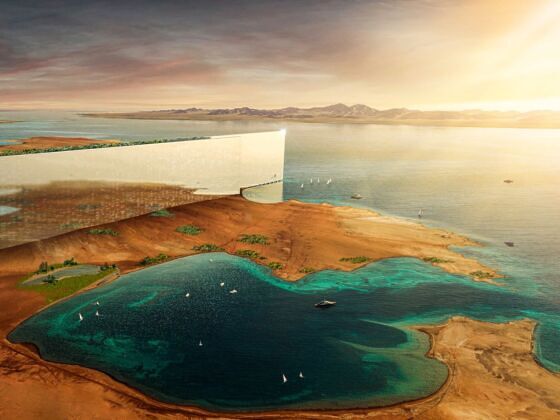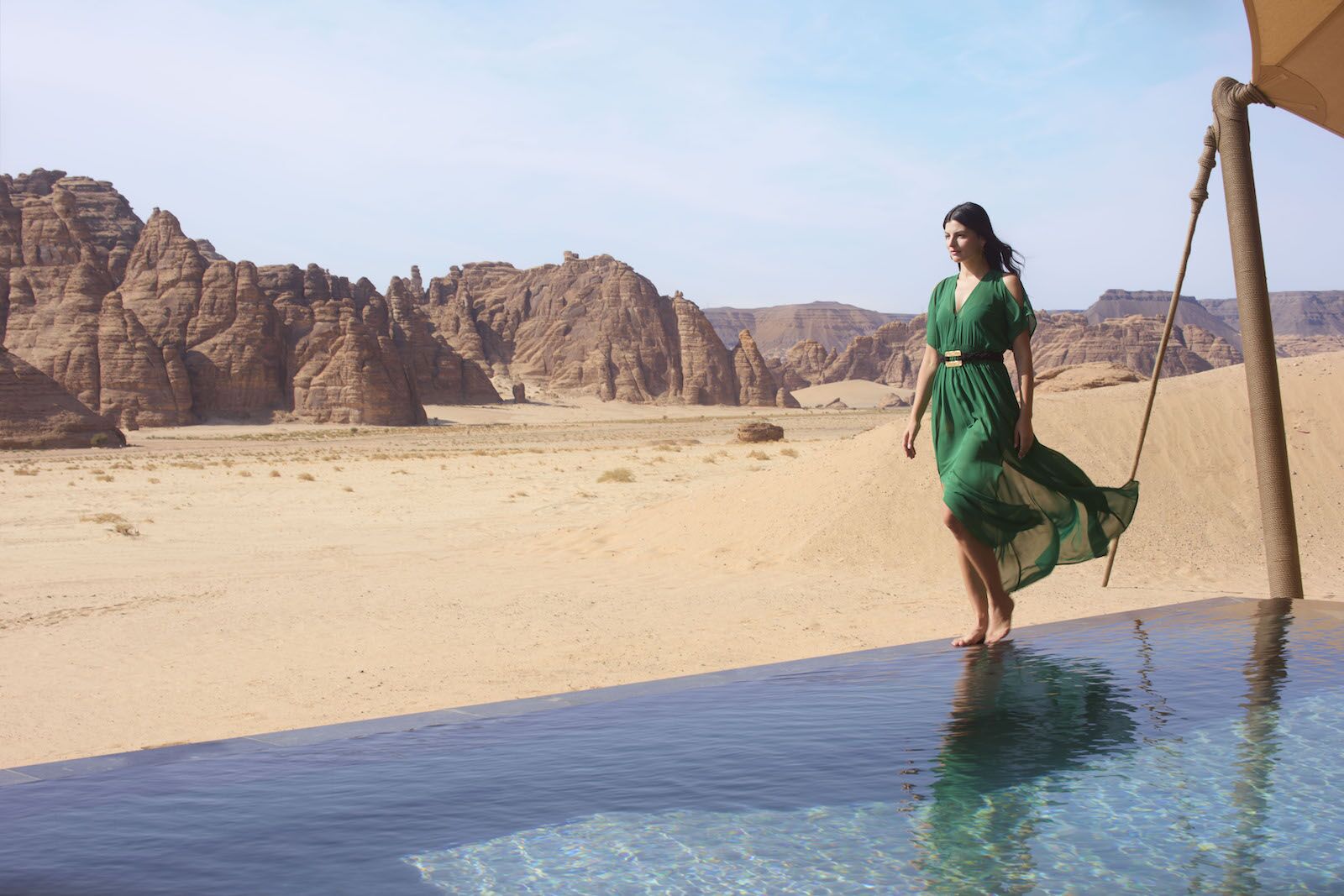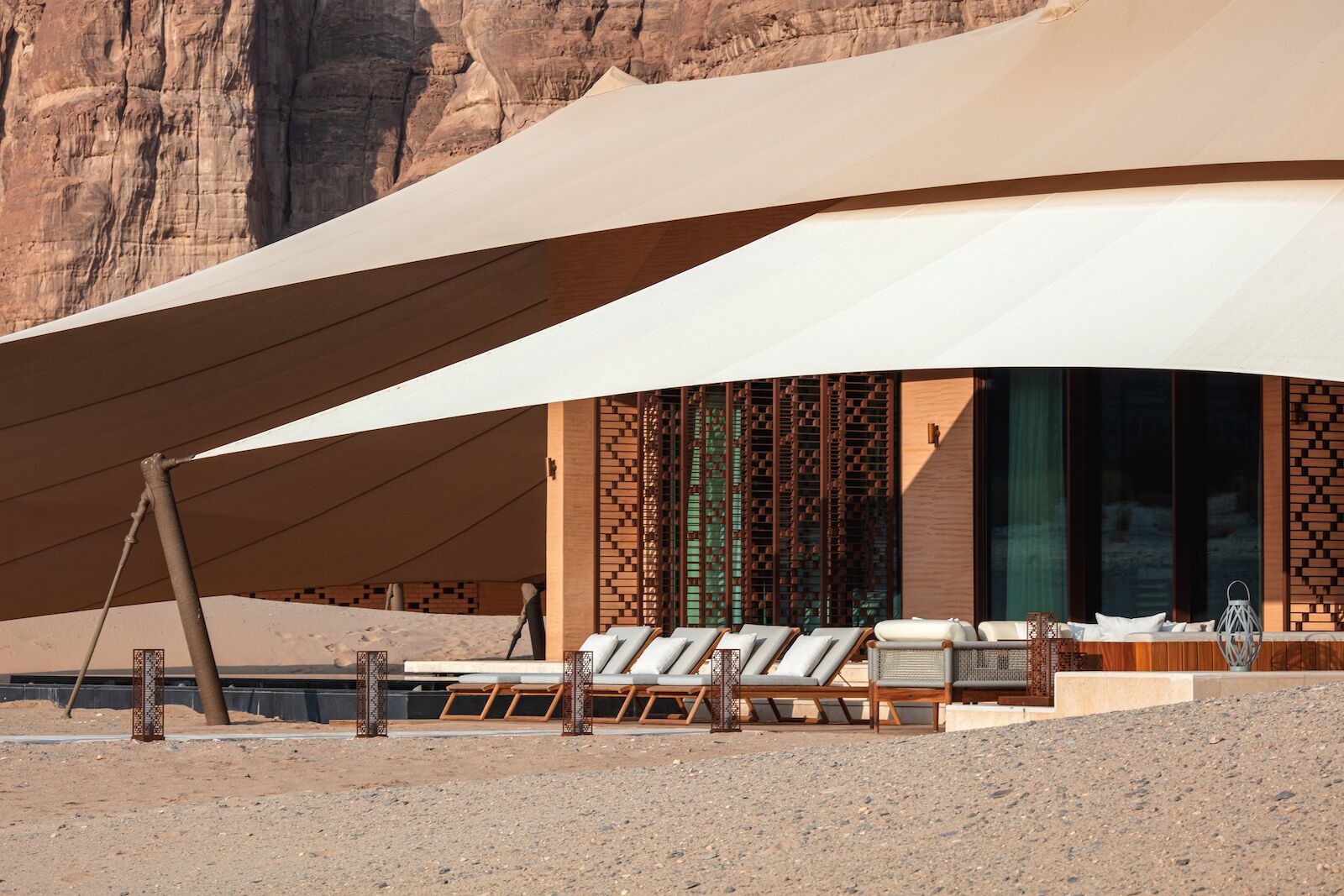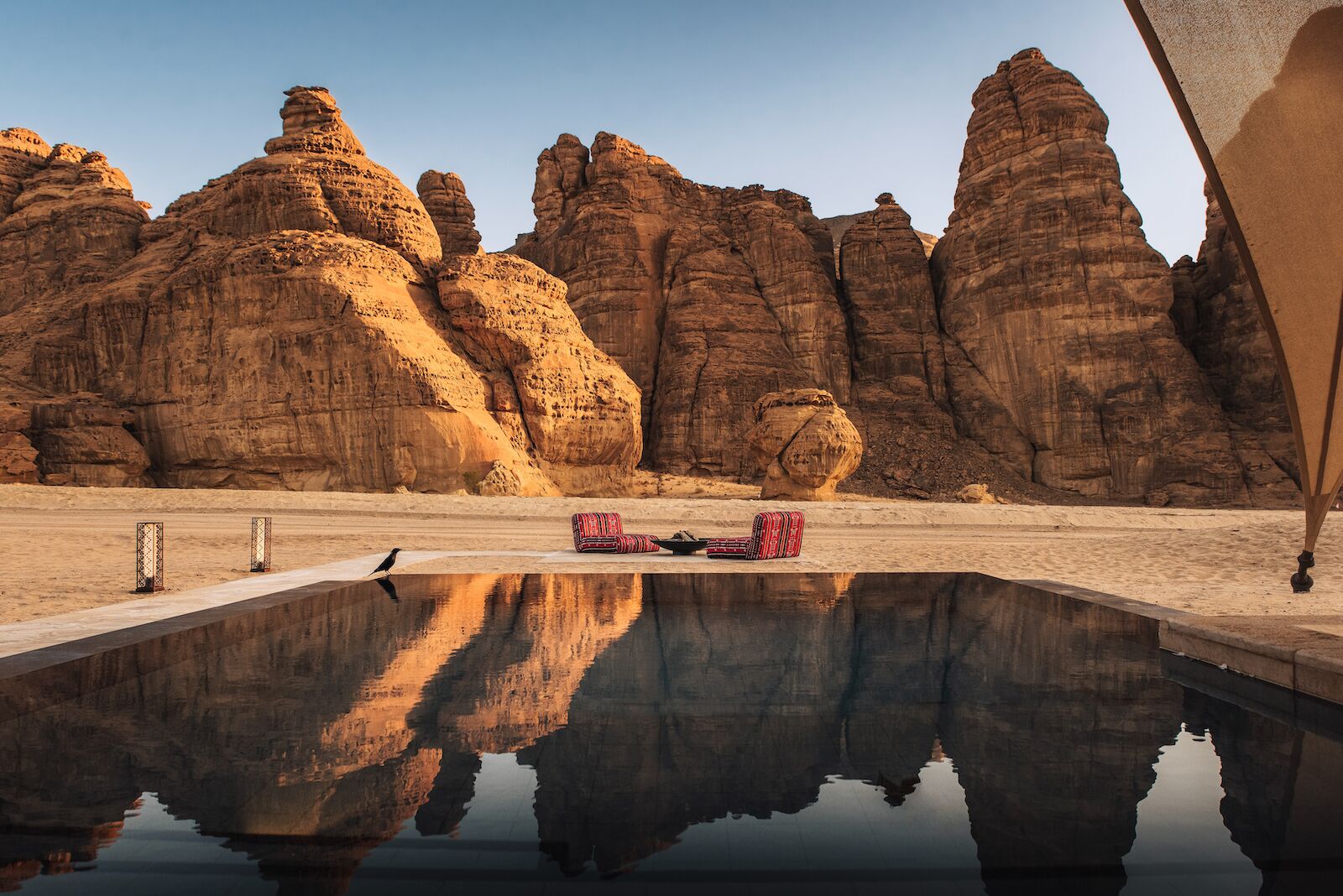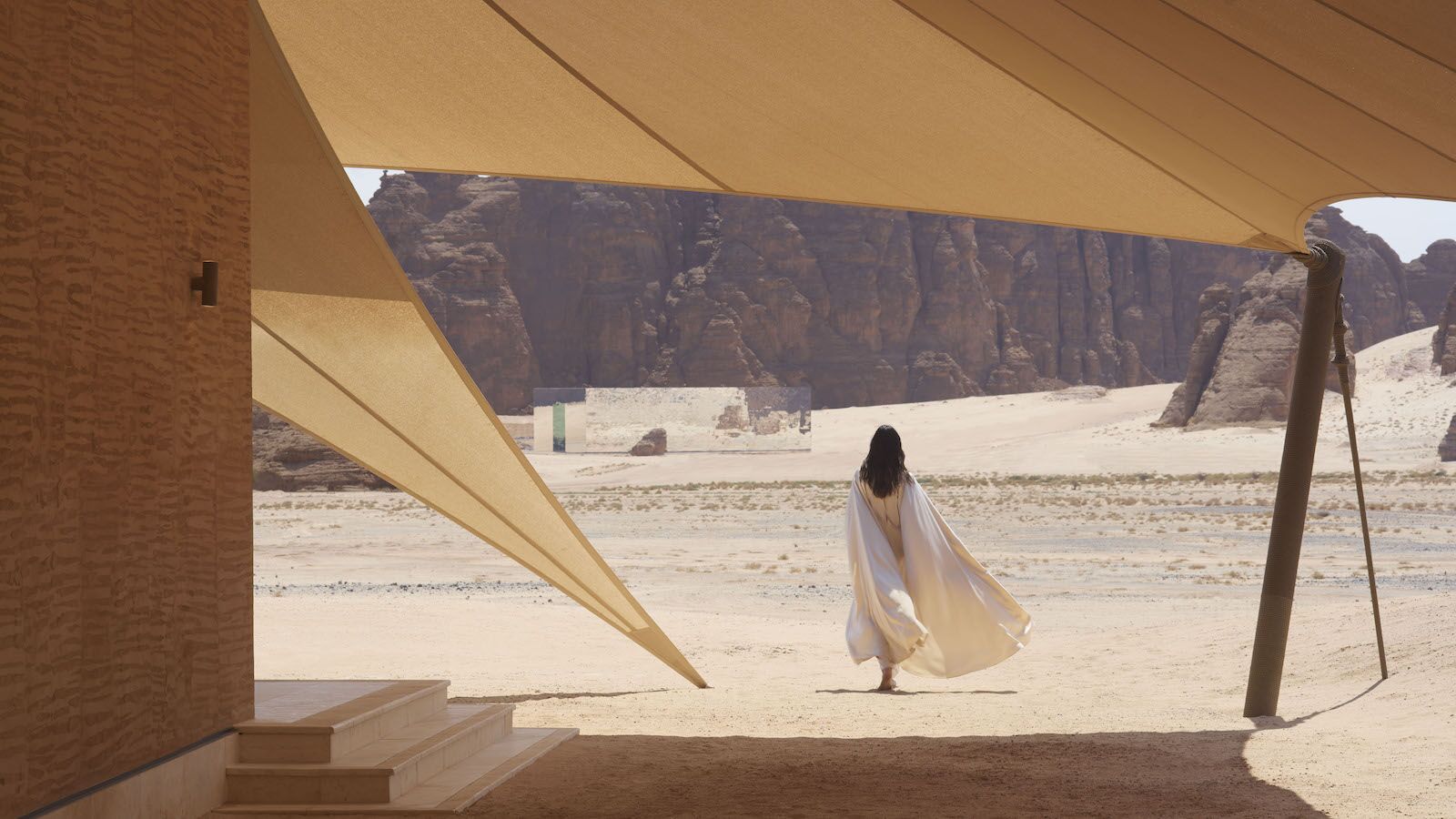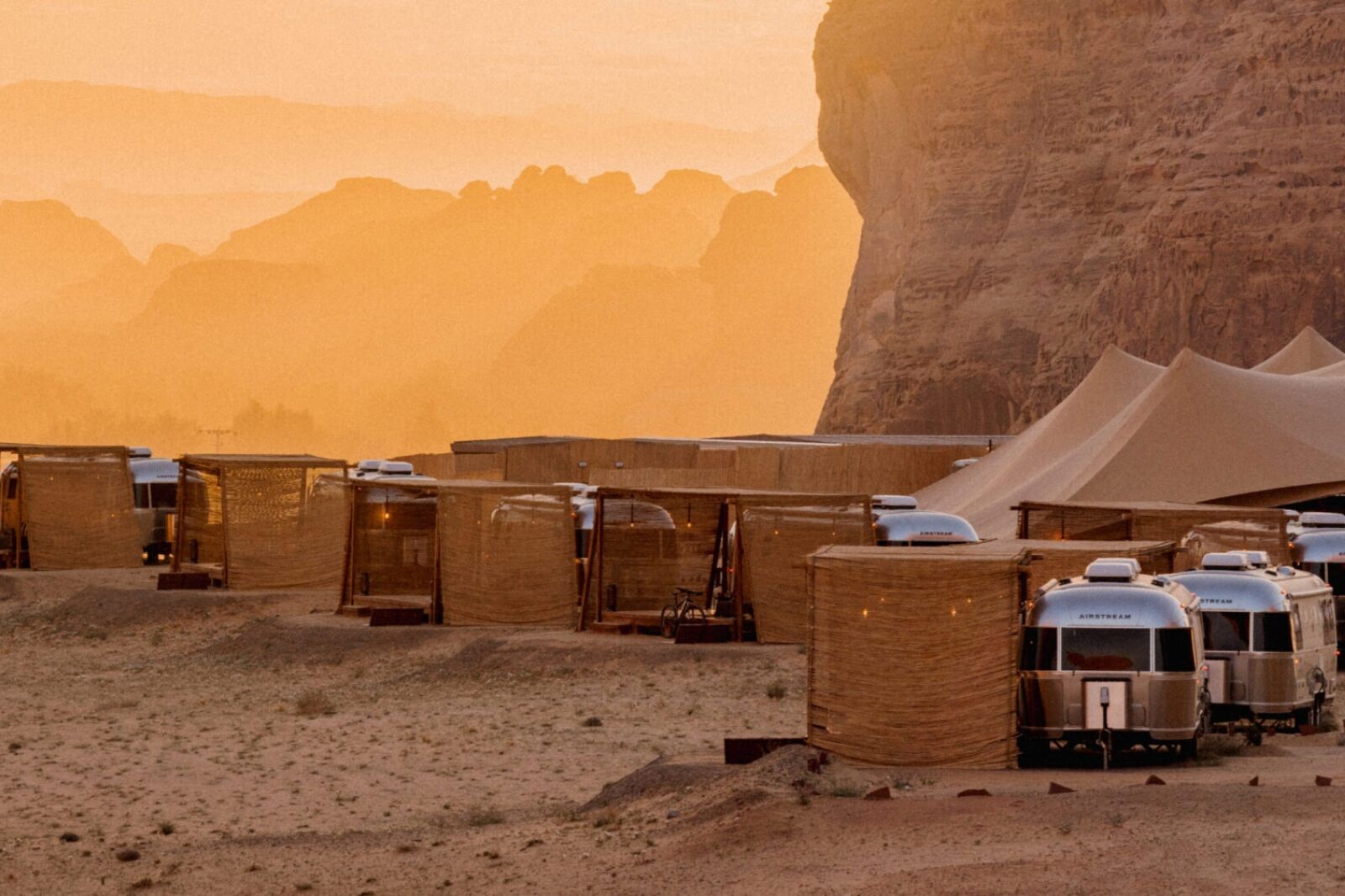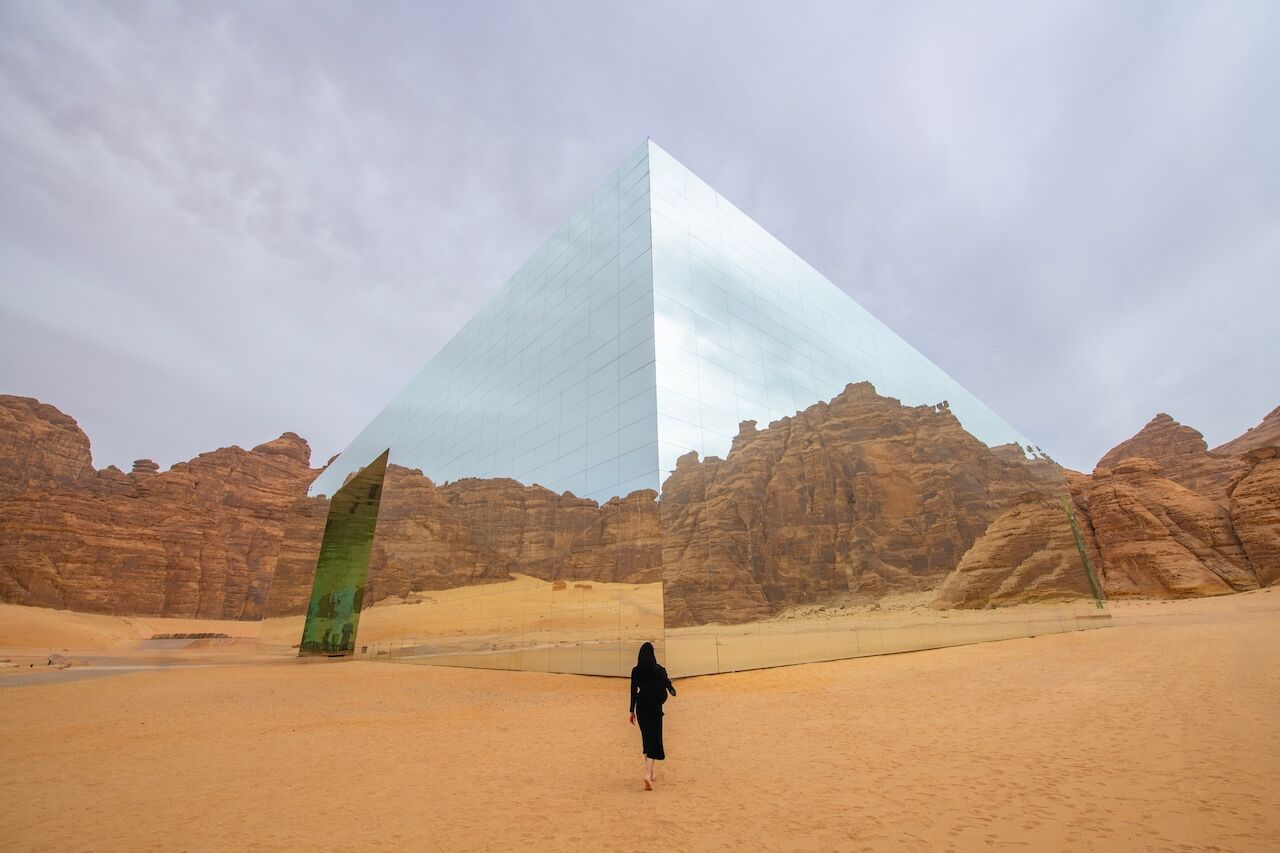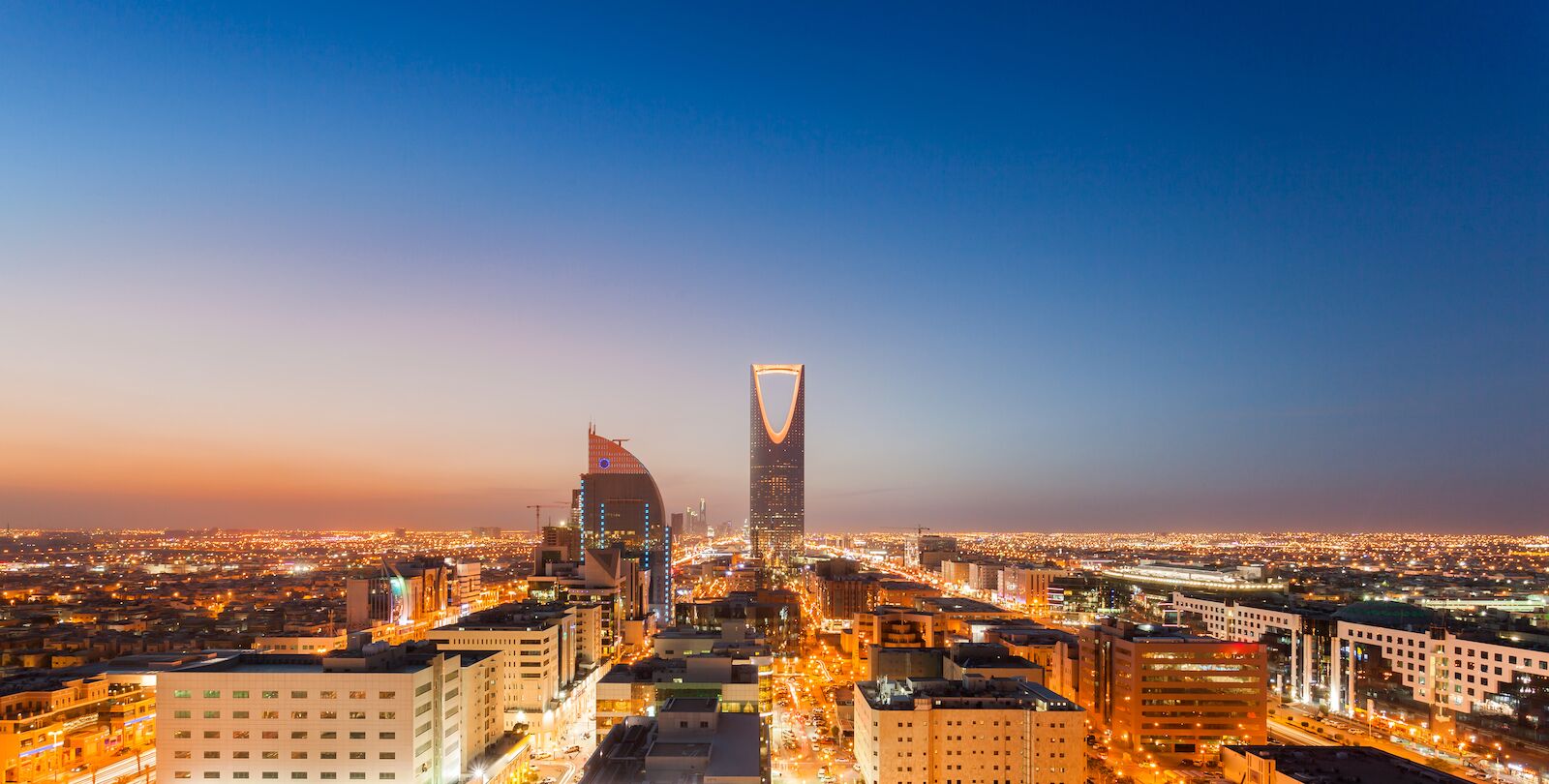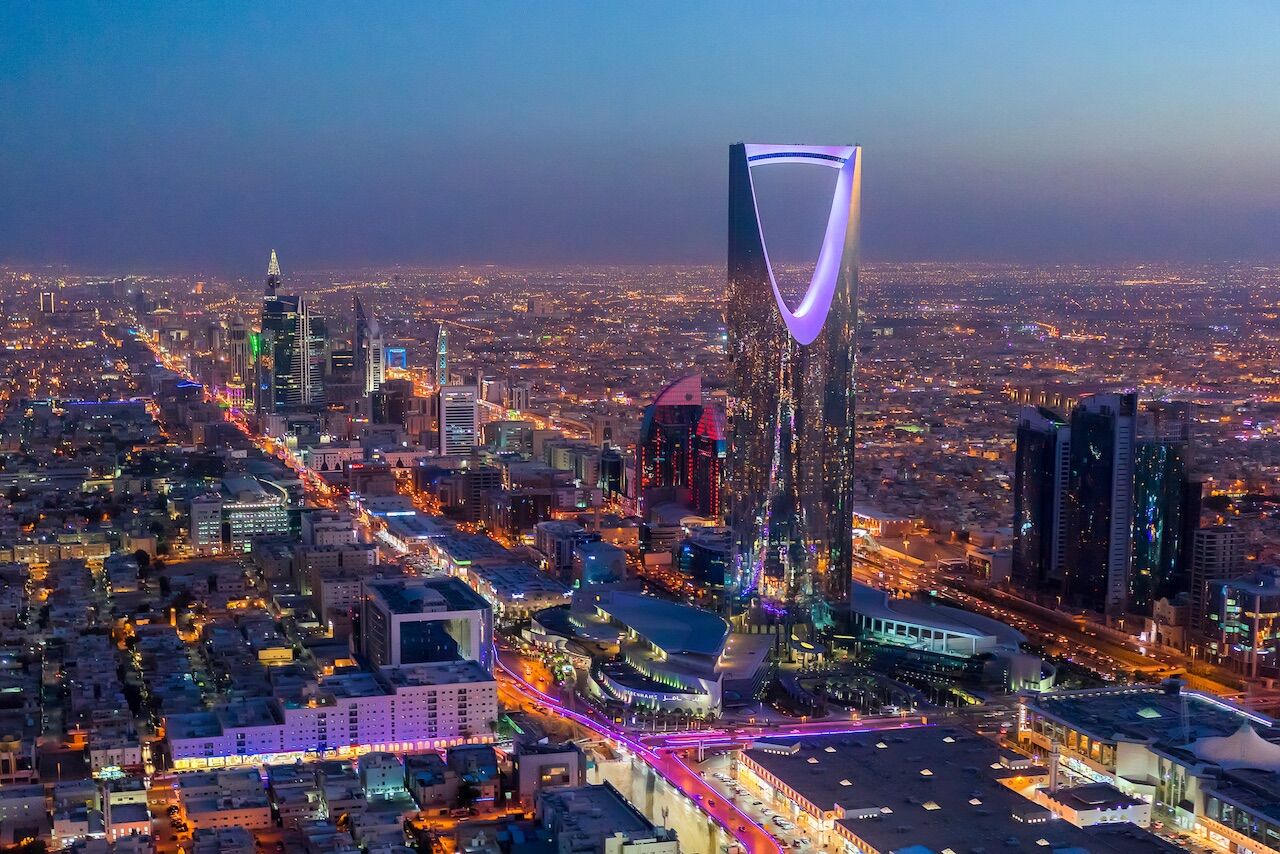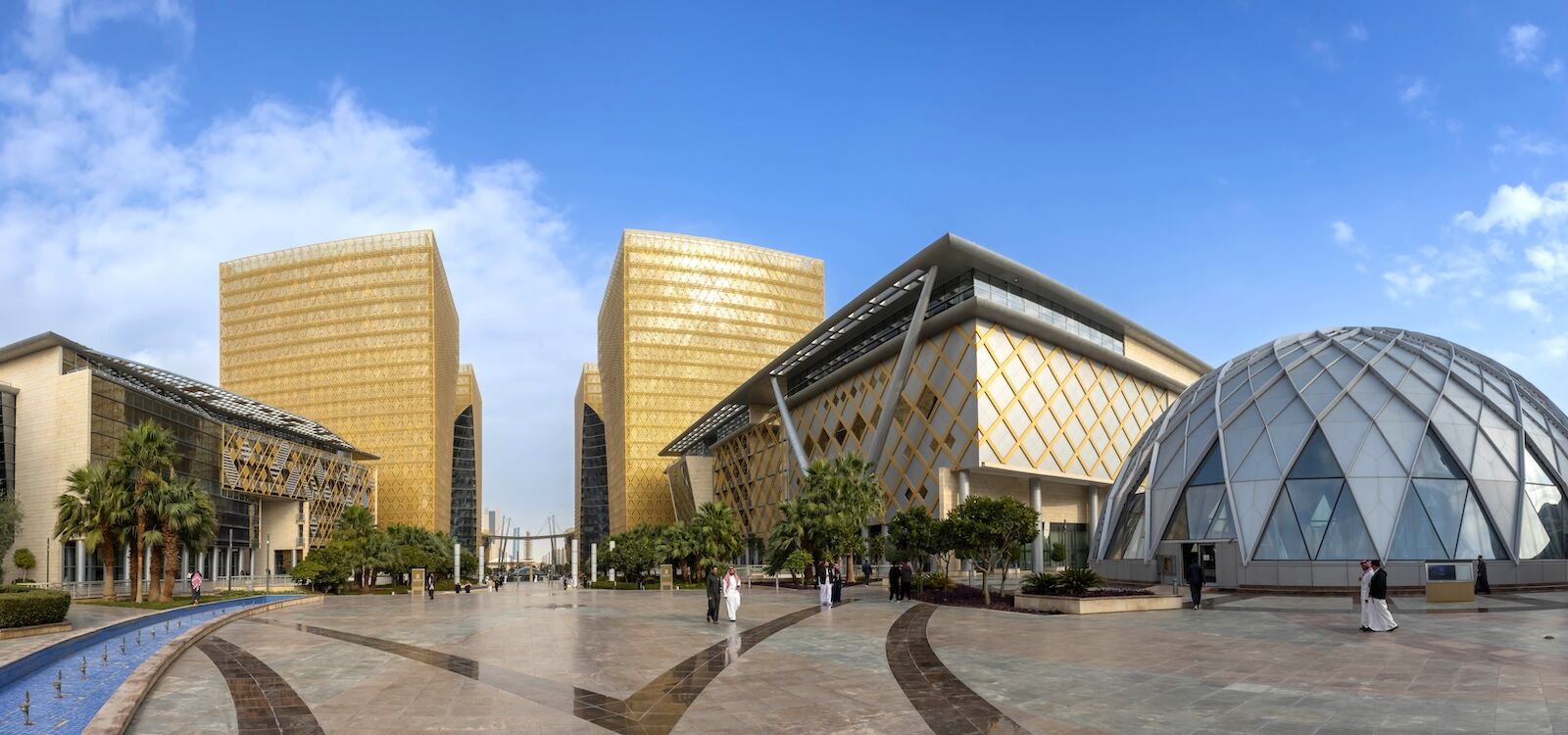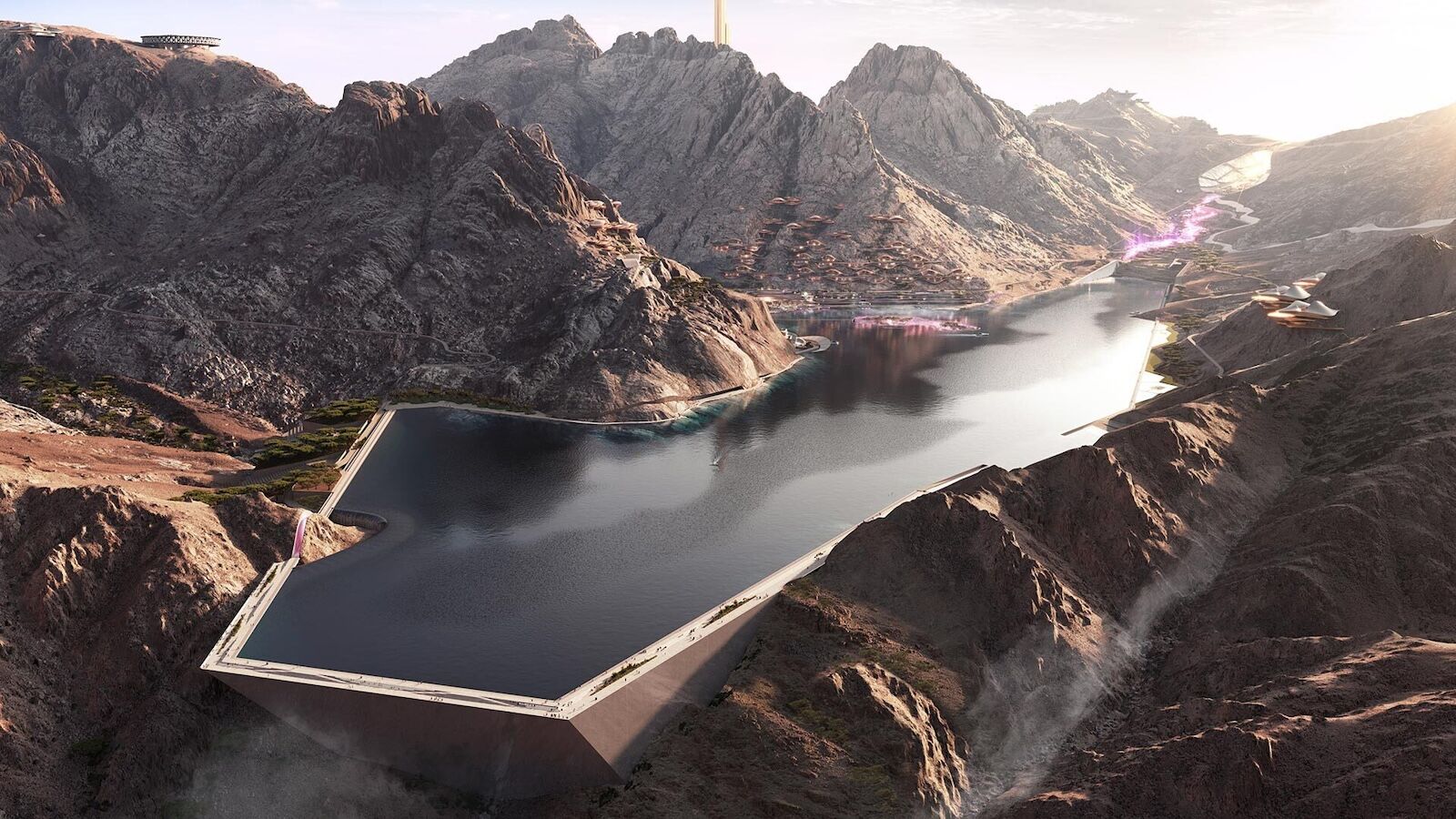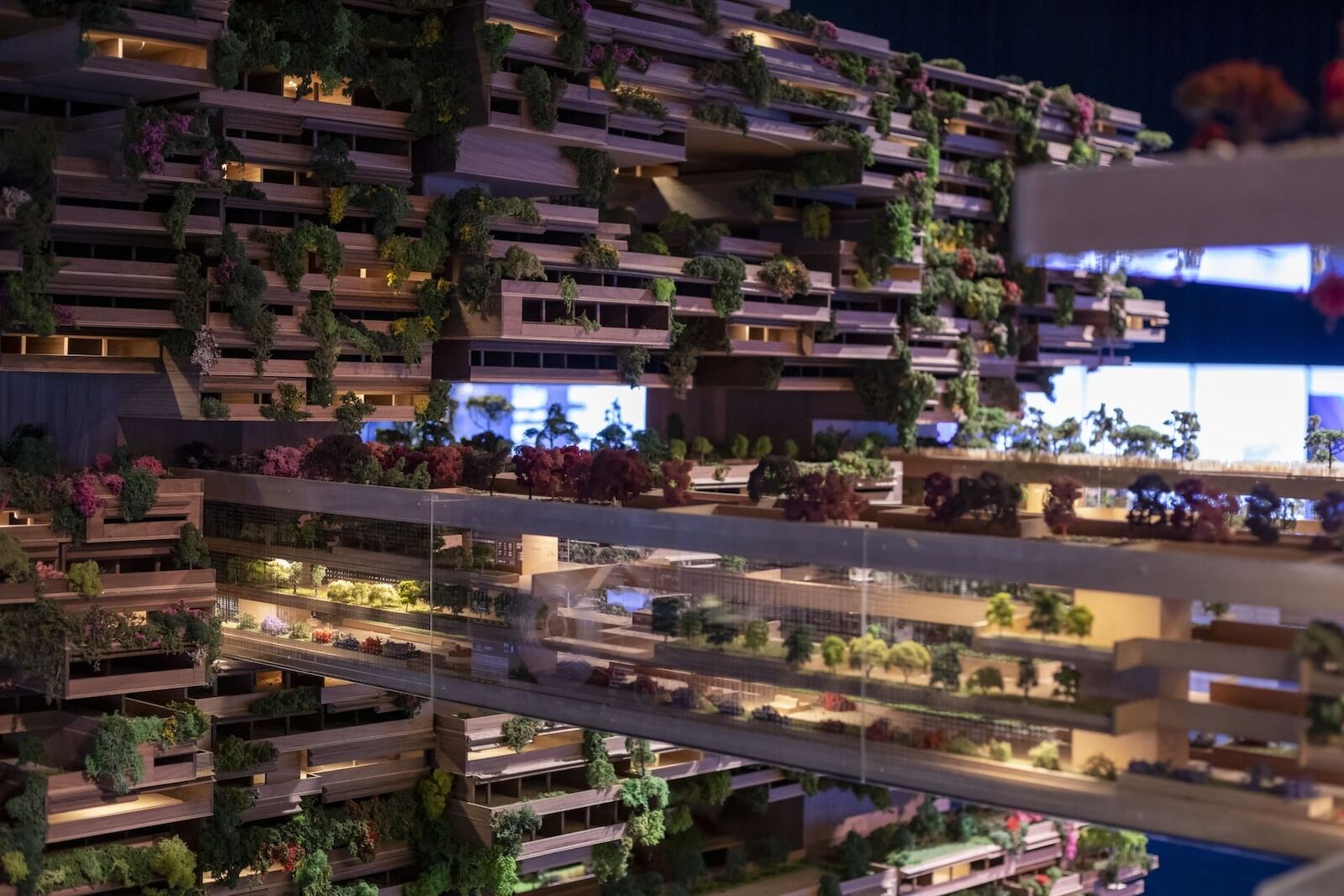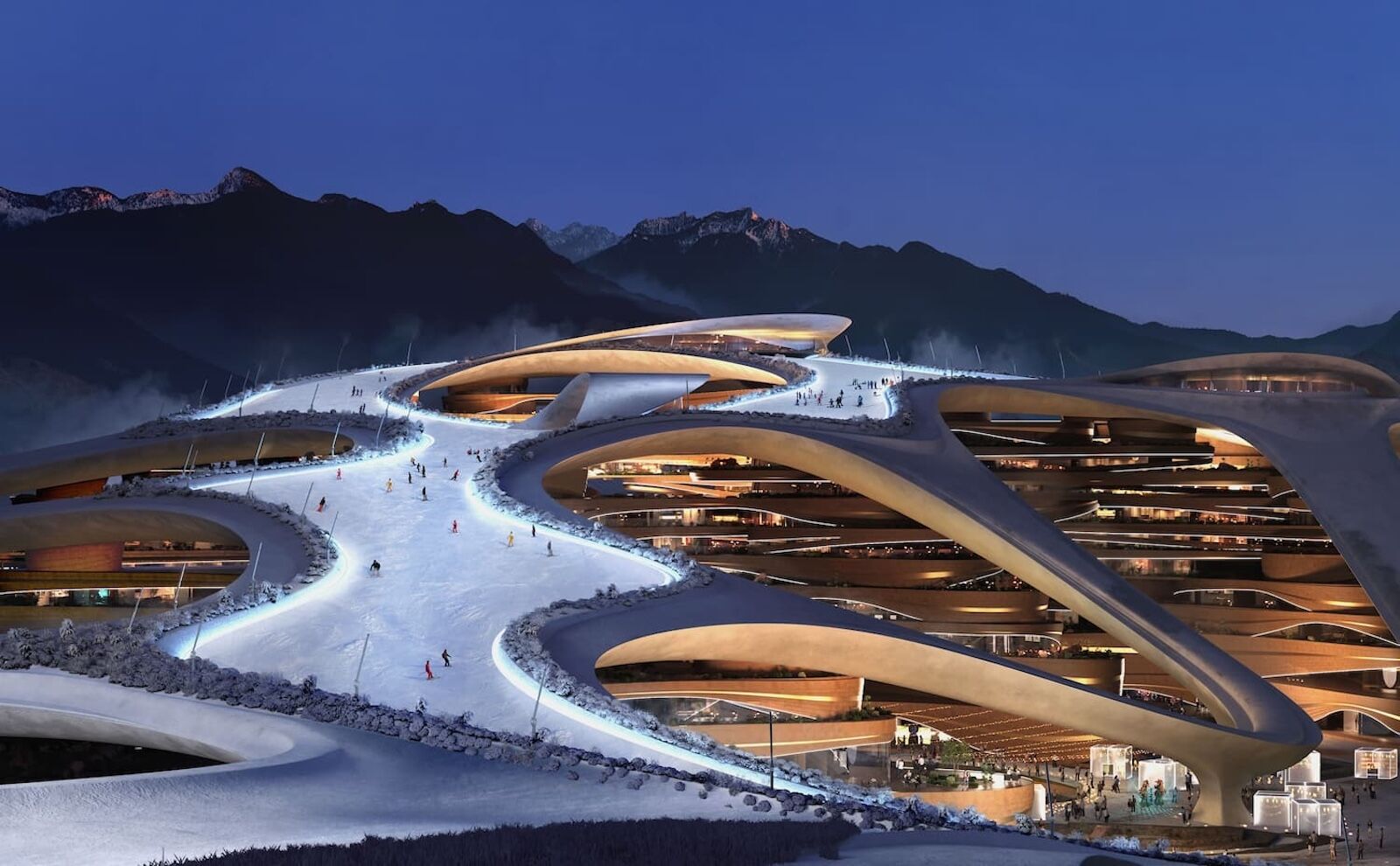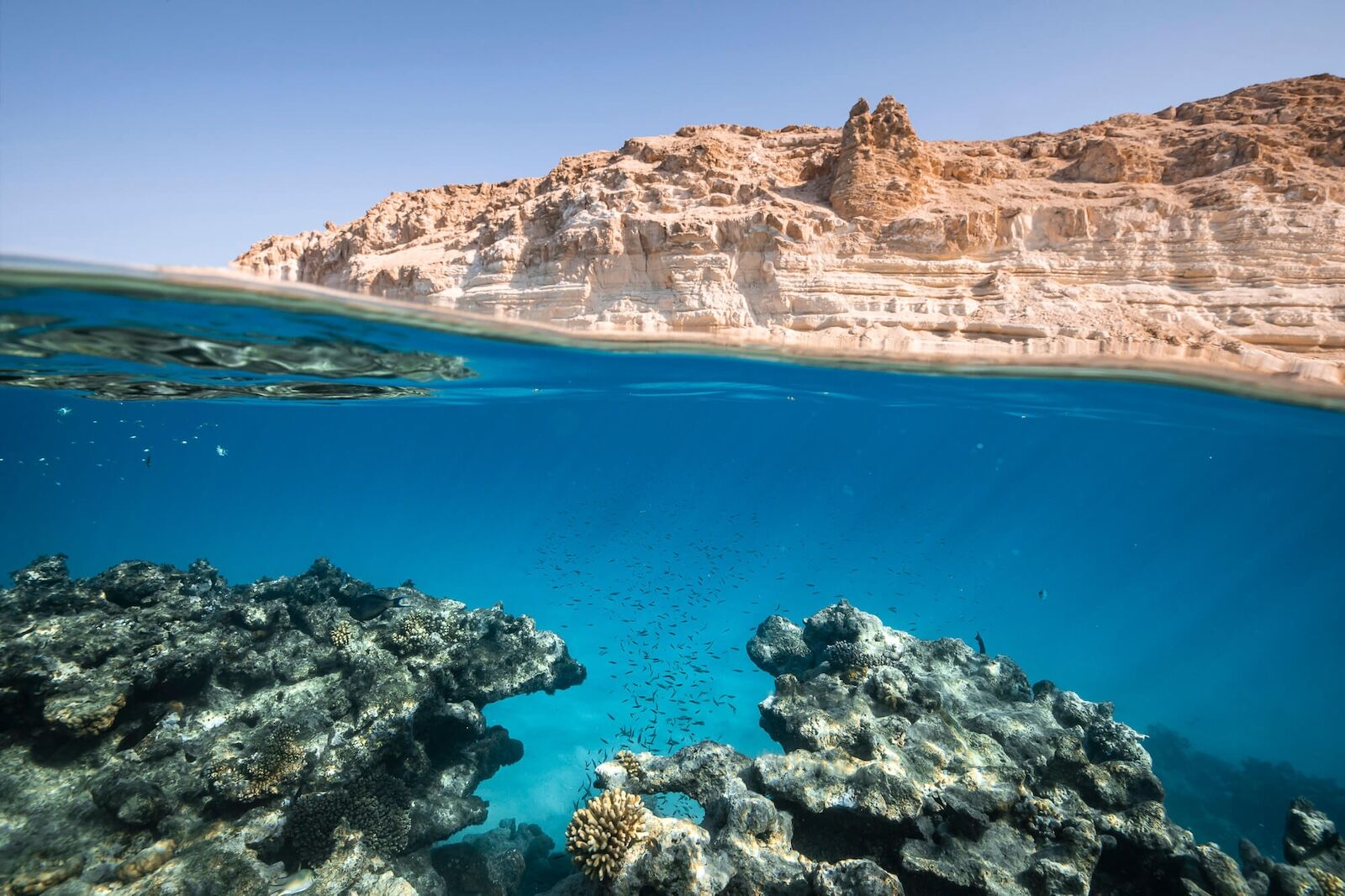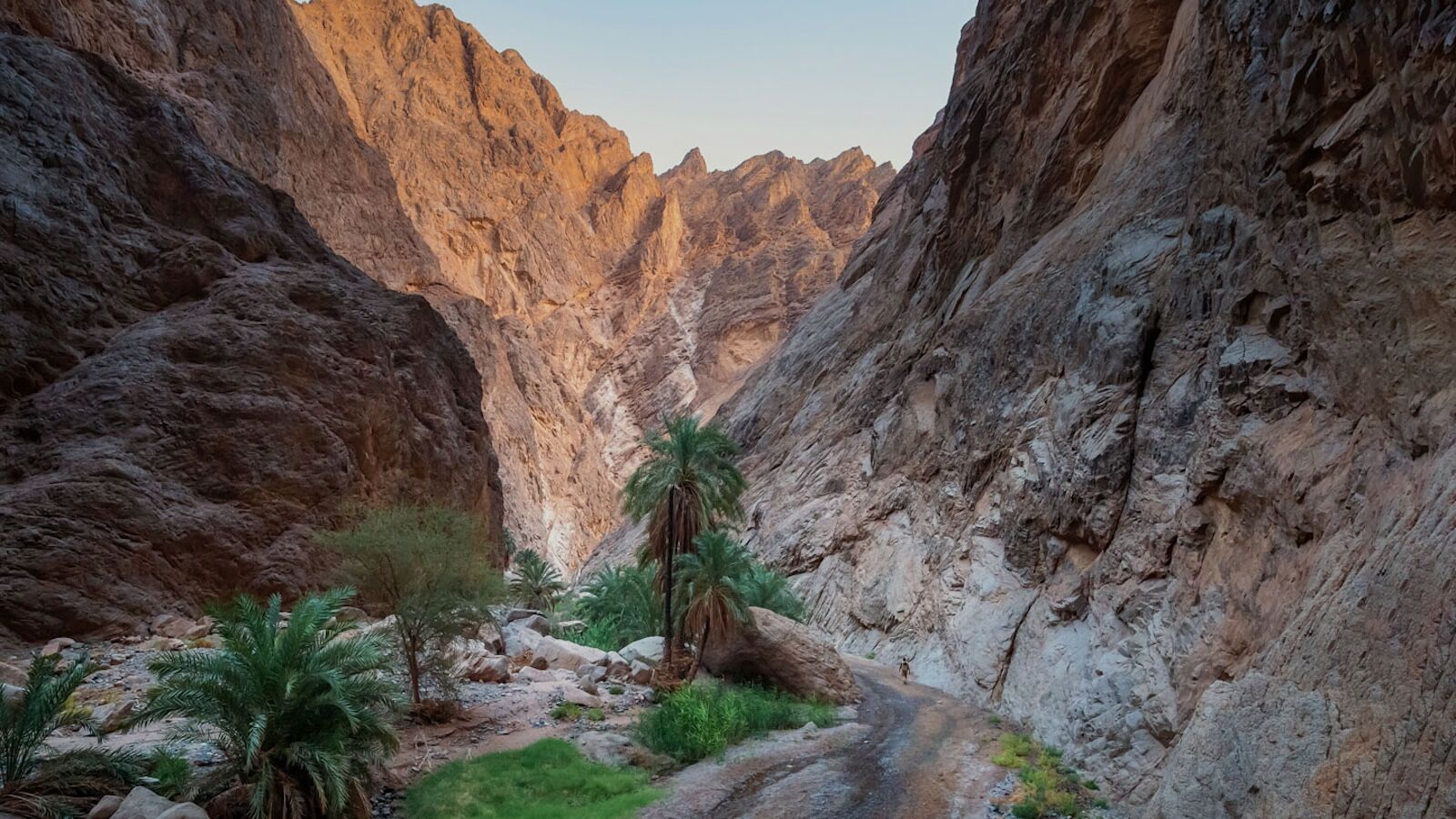Since opening to tourists in 2019, Saudi Arabia has quickly become a world leader in travel. The country was elected as the Chair of the United Nations World Tourism Organization in 2023, and Saudi Arabia’s Ministry of Tourism aims to welcome 100 million tourist visits by 2023. Such rapid growth takes massive investment — something Saudi Arabia has already proven to be more than willing to do successfully. With increased cruises bringing passengers to Saudi Arabia and a manageable visa application process, it’s hard to imagine another country more poised to dominate the global tourism market in upcoming years.
Desert accommodations unlike any other
Two premium accommodations in AlUla, located in northwestern Saudi Arabia, are setting a new standard for luxury in the desert: Habitas AlUla and Banyan Tree.
Habitas is surrounded by sandstone cliffs and has 96 guest villas that are stylish, comfortable, and endlessly scenic. AlUla’s outdoor adventure activities — including hiking, biking, and swimming — are within arm’s reach, while a photogenic infinity pool awaits on site. The rooms have terraces and outdoor showers, and the property itself has a deep commitment to sustainability through solar power, rainwater harvesting, and waste reduction. The immersive and interactive art installation Desert X has pieces scattered throughout the resort. For a more budget-minded option, Caravan by Habitas offers guests all of the resort’s communal amenities when they book a stay in one of Caravan’s 22 Airstream trailers.
Banyan Tree AlUla is another level of luxury in the Ashar Valley. It has 47 guest rooms and the option for villas that range from one to three bedrooms, with a personal butler and, for the most part, a private pool. The on-site restaurant, Harrat, utilizes produce from local farms for its Arabic and international dishes, while the Thai restaurant Saffron is one of the first of its kind in Saudi Arabia. Here, the infinity pool is beautifully lodged between two canyon rocks.
The properties themselves are worthy of a trip, but AlUla offers so much more. There’s Maraya, a concert hall and art exhibition space that’s the world’s largest mirrored building. Old Town AlUla gives a glimpse into the past, as does Hegra, Saudi Arabia’s first World Heritage Site, just north of AlUla. At night, AlUla’s low light pollution and clear skies make for incredible stargazing opportunities.
Modern cities that embrace history
Saudi Arabia’s capital city of Riyadh is a blend of modern and historic, a place where you can peruse the impressive collection at the free National Museum or head just north to the UNESCO site of Diriyah to see centuries-old buildings and Islamic castles. In the city, those who travel for food will not be disappointed by the restaurants serving international cuisine and local Saudi Arabian dishes.
In the cooler months, Riyadh Season is a large and immersive winter festival with entire sections built up for shopping, entertainment, and cultural experiences.
Looking forward to the future
The tourism infrastructure that Saudi Arabia has been able to build in the short number of years since it opened to international visitors is impressive. What’s more impressive is what’s still to come.
Saudi Arabia is investing hundreds of billions of dollars to create distinct destinations. NEOM is among the most ambitious. The multi-part project is centered around a utopian city that’s built in a straight line stretching from the desert to the sea. The Leyja region will have some of the world’s most eye-catching hotels built right into the mountains, and Trojena, a cutting-edge high-desert ski resort, is projected to open in 2026. And that’s just the start.
Keeping up with Saudi Arabia’s new openings and plans is a full-time job (the latest announcement being the stunning Epicon luxury living and hotel space) though there’s no question that it will continue to become a tourism leader far into the future.
How we made our pick
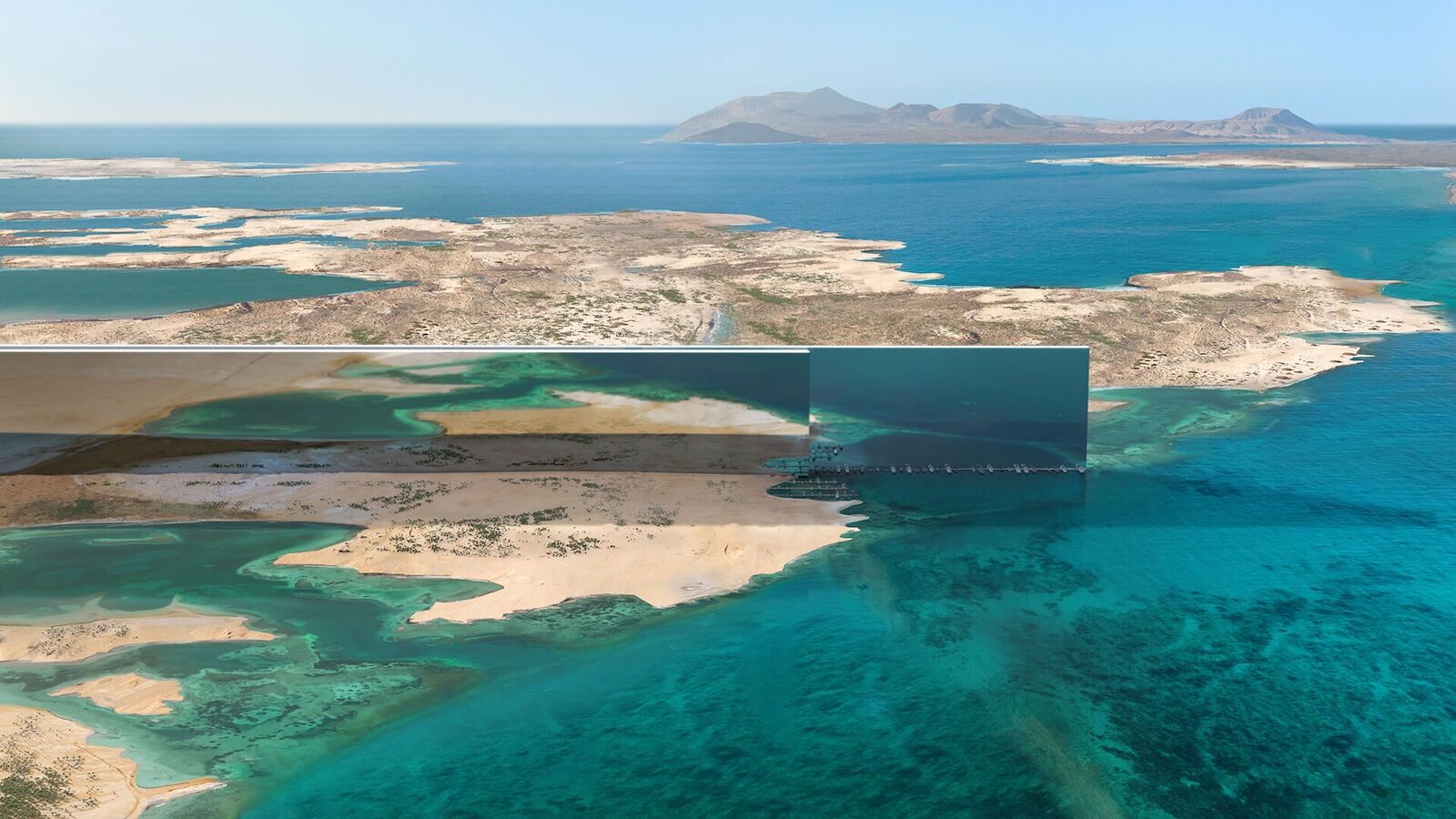
Photo: NEOM
Destinations were nominated by the well-traveled Matador Network team, from video producers and social media editors to writers and managers. Those nominations were then awarded points on a 10-point scale on 10 equally weighted categories:
- Number of new experiences
- Media presence
- Future traveler initiatives
- Sustainability efforts for the environment
- Sustainability efforts for visitors and residents
- Accessibility
- Range of accommodations
- Range of experiences
- Appeal to various traveler types
- Affordability
